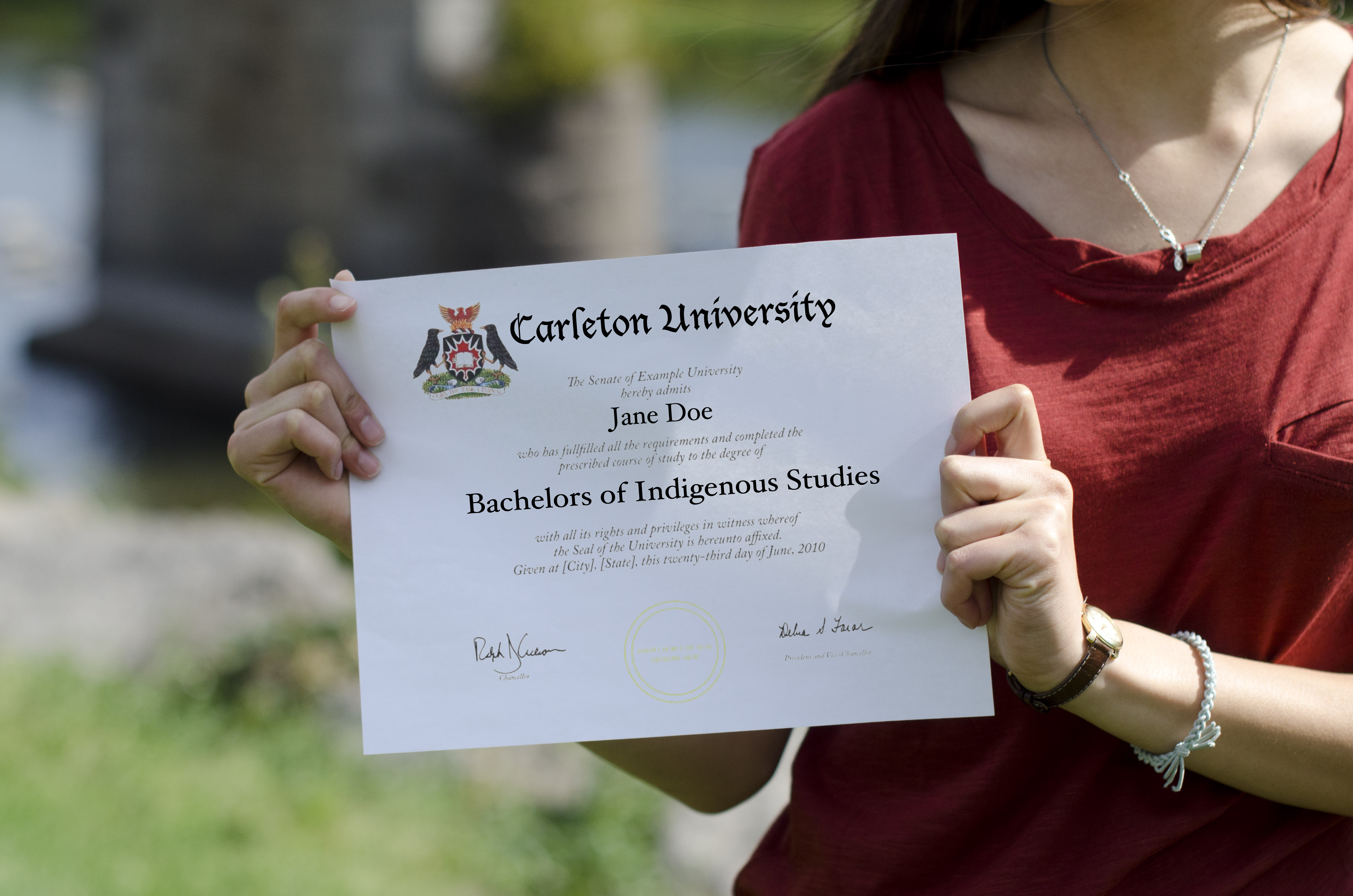Back in the ‘80s, Carleton professors Allan Thompson and Randy Boswell worked on many of the same assignments as today’s J-schoolers, albeit using typewriters and shorthand in place of cell phones and handheld recorders.
Carleton University’s School of Journalism and Communication was founded in 1945. Since then, the program has constantly adapted to new technologies and is working on becoming a more welcoming space for marginalized students.
J-school in the ‘80s
Allan Thompson, the director of Carleton’s School of Journalism and Communication, was a journalism student at Carleton from 1982 to 1986.
Thompson recalled his days as a student, where typewriters and phone booths were commonplace.
“The school was located in the St. Patrick’s Building and there was a room that had a bank of telephones. That phone room was where people went to do phone interviews because cell phones didn’t exist,” Thompson said.
Randy Boswell, an assistant professor and former J-school student, recalled using shorthand and typewriting in his classes from 1985 to 1989. Shorthand is a method of notetaking that reporters use in interviews to keep track of information using abbreviations and symbols. This was back in the days before handheld recorders and just as computers were becoming mainstream.
Boswell has been involved with Carleton’s J-school since his days as a student, working as a contract instructor before taking on a full-time teaching position in 2012.
He said his time at the school has resulted in positive working relationships with peers and students.
“I have really good relationships with lots of people that I went to school with 35 years ago. My life in connection with the school has been very rewarding, on many levels.”
However, he said a lot has changed since the ‘80s in terms of equipment and tools.
“When I was a student, we just basically started using computers by the time I was in fourth year,” Boswell said.
Technology and equipment
While the technology of J-school’s past vastly differs from the laptops and cellphones of today, the fundamental courses have remained the same. First-years took an introductory course on journalism, its values and history, before moving into second-year fundamentals of reporting, followed by radio and TV in third-year.
Back in the ‘80s, audio and video courses were referred to as TV and radio before taking on more modern titles.
“When you were editing your radio pieces, you were literally cutting pieces of tape with a razor blade and stitching it together with tape,” Boswell said.
Boswell recalls the advantages of having a car in video classes.
“When I was learning television, everyone wanted to be on my team in those days because I had a station wagon. It was very popular in television because the TV cameras and other equipment involved in shooting TV on those days was really heavy and it came in gigantic suitcases,” he said.
In 2018, the school transformed its former newspaper Centretown News into today’s digital publication, Capital Current.
The internet revolutionized the journalism industry, and since then, journalism schools have had to adapt to teach students about data journalism and multimedia tools.
“The story of the school of journalism since its founding has been an evolution to reflect the changing technology of the news industry,” Boswell said. “We think we’re struggling and scrambling to adapt to new technologies today, well, it’s kind of been going on since the beginning of journalism history.”
Thompson highlighted the importance of the fundamental values of journalism, which haven’t changed over time.
“Don’t let the technology drive the way you do the job. You decide how you’re going to do the job,” he said.
Diversity and inclusion
Boswell said the culture within the school was much more competitive in the ‘80s.
“It felt competitive and it felt kind of cutthroat, to be honest. There was a bit of a ‘sink or swim’ attitude. And I’d say that’s changed over time,” he said.
“I think we all recognize that it wasn’t a very welcoming place for people of colour. The faculty was probably completely white when I was there as a student. It was highly male. All of my teachers, save one or two, were men,” Boswell added.
Since then, the department has attempted to diversify both the faculty and curriculum. These changes are part of the school’s 2020 commitment to students in response to a call to action made by students and alumni.
The calls to action included hiring more BIPOC faculty members, amending the curriculum to include the history of Indigenous peoples in Canada and deconstructing the definition of objectivity.
Recent additions to the faculty include Nana aba Duncan, Adrian Harewood and Duncan McCue. According to Thompson, these journalists bring diverse perspectives and groundbreaking courses to the program.
“[They] bring this incredible expertise from their news organizations, their areas of specialty and research programs that are going to take the school in new directions. [The school is] just much more focused on equity, diversity, inclusion, what it means to be a journalist [and] whose voices aren’t being heard,” Thompson said.
McCue is introducing a fourth-year course called Reporting in Indigenous Communities in the winter 2024 semester. This course has partnerships with four Indigenous communities in the Ottawa Valley, including the Kitigan Zibi, Pikwàkanagàn, Akwesasne First Nations and the urban Inuit community within Ottawa.
“I think it’s really important that journalism students begin to recognize that they can report on Indigenous issues from wherever they are. There are important Indigenous stories in their own backyards that they can and should be reporting on,” McCue said.
He said Carleton and journalism schools need to increase Indigenous student enrolment. To help reach this goal, McCue is also offering an Indigenous Journalism Certificate. This certificate will be based on partnerships with Indigenous communities, and is designed to attract remote learners.
“It’s one more step towards, certainly, being responsive to the Kinàmàgawin report, and also TRC call to action No. 86, which said that journalism schools need to do a better job of teaching journalism students about Indigenous cultures, Indigenous politics and some of the history of Indigenous relations in this country.”
Associate professor Adrian Harewood’s graduate seminar titled Journalism, Race and Diversity offers students the opportunity to learn about diverse communities and their contributions to the industry.
“It’s a course that tries to deal with the matter of race. It gives the students an opportunity to have some conversations that they haven’t had before,” Harewood said.
Harewood’s new undergraduate course called the History of Black Canadian Journalism, is also making history.
“It’s the first course of its kind. The course talks about the beginnings of the Black Canadian journalism in the 1850s,” he said.
Harewood highlighted the importance of understanding the historical work of Black journalists, whose contributions impacted their communities beyond the journalistic realm.
“I think it gives you access to communities that perhaps experienced society in a different way. If you are exposed to that, hopefully, it allows you to ask more informed questions, more critical questions,” he said. “It helps you to understand why communities develop the way they develop. It’s never a bad thing to expand your horizons.”
Harewood said the school is taking steps to make the program more inclusive through hiring and curriculum changes.
“The department has made a considerable effort to make sure that the curriculum better reflects the diversity of the school, but also the diversity of the country we’re living in. I think that communicates to students, I would hope, that the school is open and that the school is aware of the need to represent many different voices,” he said.
The Mary Ann Shadd Cary Centre is another new addition to the journalism school that will offer a safe space for racialized journalists.
The centre’s purpose will be fostering intersectionality within journalistic practice.
“I think that’s another indication of the department’s commitment to fulfilling its responsibilities and to living up to the promises that it made to its students a couple of years ago,” Harewood said.
Thompson said although the journalism industry is changing, the school has continuously adapted.
“I don’t think it’s quite the disaster that some people’s parents are probably telling them. The industry is in transition,” Thompson said.






